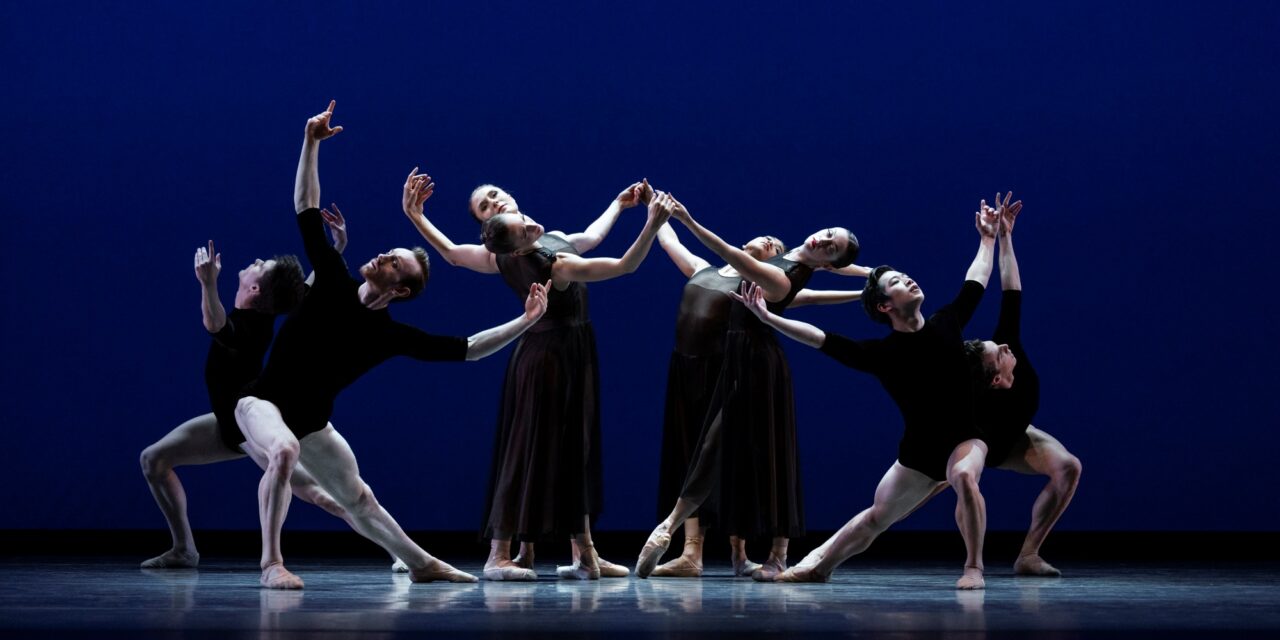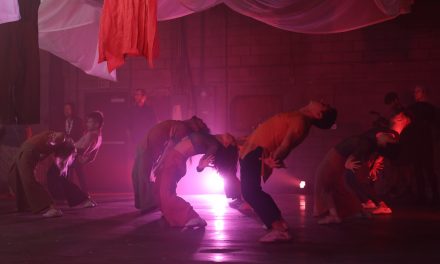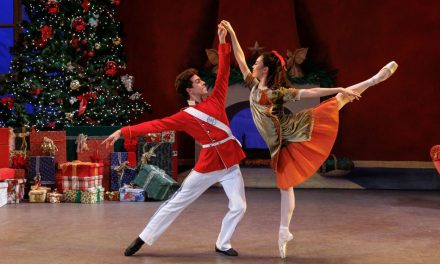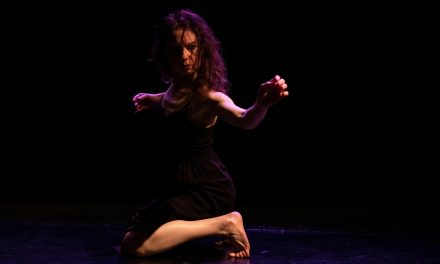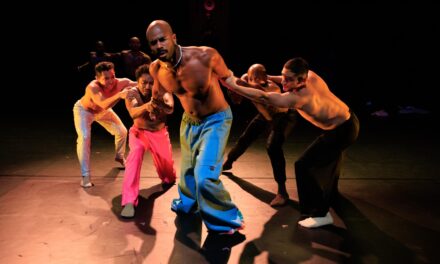This past weekend, Pacific Northwest Ballet brought another intriguing production to its home stage and also to the digital stage. Perfectly captured on screen were three works including the world premier of “The Window” by Australian choreographer, Dani Rowe.
First up however, was a return to Alexei Ratmansky’s poignant “Wartime Elegy.” Created at the onset of Russia’s invasion of Ukraine, this was a comment on the fear of what was to come. Unfortunately, these fears were and are still being realized as the onslaught continues. In the face of unending violence this ballet is solace of a sort. The curtain opens to reveal bodies lying on the floor in semi-darkness while a projection looms above abstractly evoking destruction and isolation. The classical movement is slow, deliberate and beautifully rendered and while Ratmansky is capable of drawing the audience into his dark world, he stays on the surface of what horror really looks like. Using repeated canons as a device throughout, he follows the haunting music by Valentin Silvestrov, quite literally and though he has an endless vocabulary of ballet moves, more might be made of the actual subject matter. Following this are two segments that pay tribute to Ukrainian folk dance.
First the energetic male dancers enter cavorting in the festivities of a celebration. With moves lifted directly from traditional dance, the mood is instantly changed to one of carefree camaraderie. The three friends who execute every move precisely and joyfully are Lucien Postlewaite, Luther DeMyer, and Kuu Sakuragi. In order to create the final audience pleasing tricks they are joined by James Kirby Rogers.
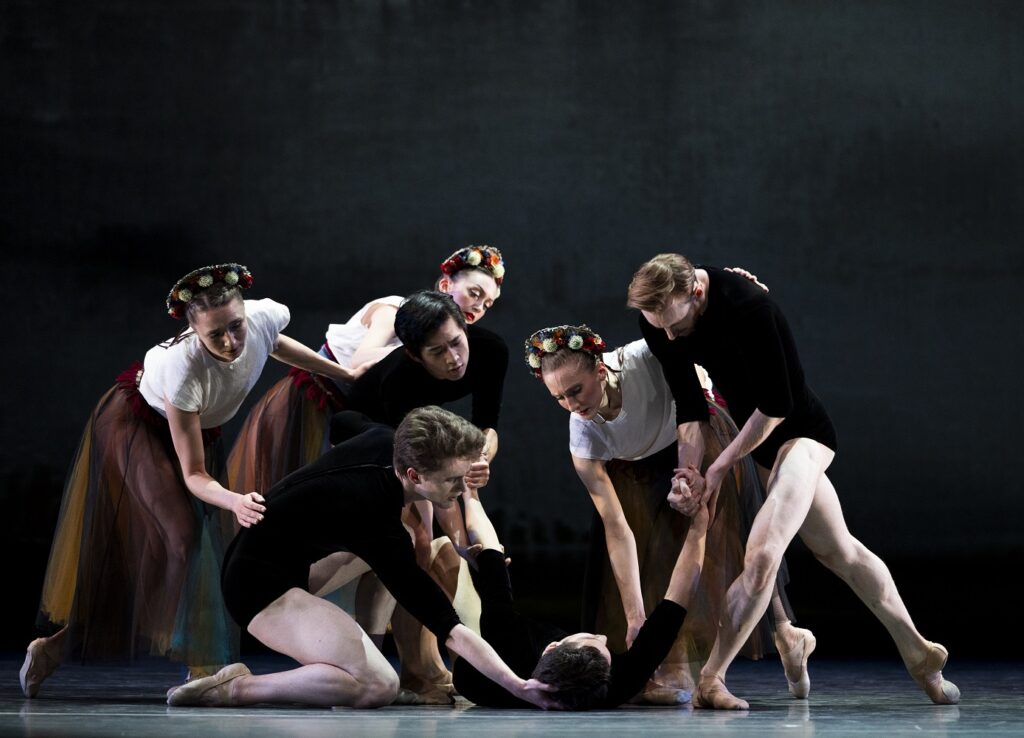
Pacific Northwest Ballet company dancers in Alexei Ratmansky’s “Wartime Elegy” – Photo © Angela Sterling.
Now it is the girls’ turn and out they come in spring flower headpieces and flowing skirts. Charming movement fills the music, balletic yet traditional, they are enjoying themselves immensely and so are we. Each solo is deftly performed by Madison Rayn Abeo, Angelica Generosa, Cecilia Iliesiu and Elizabeth Murphy. Near the end they are joined by the four male dancers who usher in the final segment.
This brings us back to the beginning as the music of the opener resumes along with the lyrical style. Once again it is perfectly performed by the company but the repetition of “follow-ups” becomes tedious and expected. Ratmansky has created a piece that is both beautiful and traditionally fun, yet it does not have the depth of storytelling or feeling that a situation as grievous as this war needs now.
The always appropriate lighting by Reed Nakayama added a needed moodiness to the stage as does the evocative backdrop illustrations by, Matvei Vaisberg and Maria Prymachenko. As usual kudos must be given to the PNB Orchestra and their conductor Emil de Cou as well as solo pianist, the gifted Christina Siemens. The traditional Ukrainian village music was credited to Pidkamecka Kolomyika and Nina Polka.
The costumes by Moritz Junge, are a confusion of traditional long skirts for the women and short black unitards for the men. Unfortunately, and distractingly, it appeared as if the men had lost their pants.
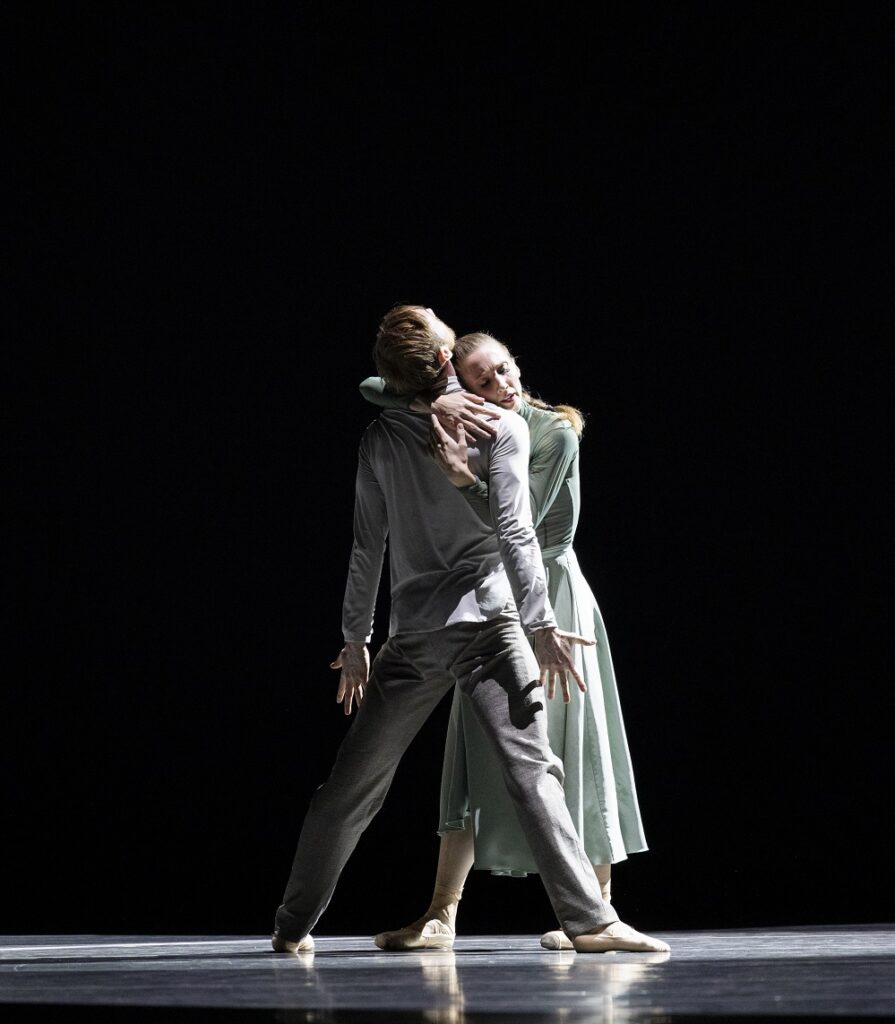
Pacific Northwest Ballet principal dancers James Kirby Rogers and Elizabeth Murphy in the world premiere of Dani Rowe’s “The Window” – Photo © Angela Sterling.
Dani Rowe’s new ballet “The Window” is full of potential not quite met. Melisa Guilliams is “The Watcher” of dancers, Elizabeth Murphy and James Kirby Rogers, as they fall in and out of love. Set in “five chapters” this is a slight but potent premise. The initial choreography is nonstop, balletic in style with modern overtones. All three dancers perform with exacting precision and palpable emotion but unfortunately real sensuality is missing due to the need to keep moving. The music by Shannon Rugani is an overflow of notes falling fast and furiously which is mirrored by the constant movement, this in turn, never allows for a languid moment or a slow kiss. The character of “The Watcher” is underdeveloped and though Guillams does everything possible with the role and dances with utter conviction, her motivation is unclear. Perhaps watching is a vicarious pastime for this lonely soul or maybe she is deranged, we never do find out. Part four, the break-up has much more intensity and is thereby far more compelling. If the introduction to the lovers had been infused with real burning passion, this “break-up” would have been devastating. In the fifth and final scene, the two women dance side by side in a confusion of emotions. There is much to appreciate in Ms. Rowe’s new work. Hopefully, she will develop it further as it has all the potential to be everything it wants to be. The lighting by Reed Nakayama clearly delineates the stage into two parts fully illustrating the idea of the window. Costumes are by Emma Kingsbury and once again, Emil de Cou keeps the PNB Orchestra moving.
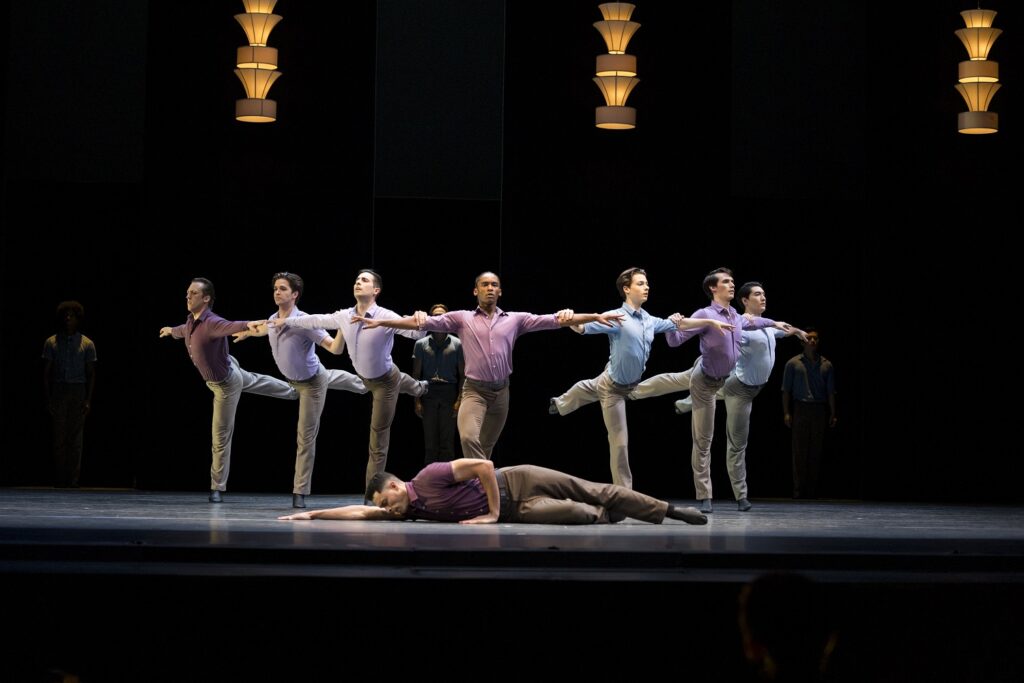
Pacific Northwest Ballet company dancers in Donald Byrd’s “Love and Loss” – Photo © Angela Sterling.
The highlight of the night was Donald Byrd’s ingenious work “Love and Loss.” With a musical soundscape by Emanuel Witzthum, Mr. Byrd has managed to fill the stage with luscious pas de deux, terrific ensemble dancing and abundant emotion. Five panels hang upstage separated by beautiful art deco style lamps all of which are saturated with everchanging color complimenting the moods created by the dance. An amalgam of styles from classical ballet to modern and jazz are handily integrated throughout Byrd’s work adding to its easy accessibility. His motivations are clear and though this is an abstract piece it still tells a story and truly creates an emotional response. The first of five sections features Leta Biasucci and Lucien Postlewaite as a couple grappling with what it means to love. Brilliant choreography allows us to understand that in this duo and those that follow, it is the women who lead and, in the end, leave the devastated men behind. This is not the usual take on romance but one that has a place in life and therefore should exist onstage. Each couple is allowed to express themselves through the beguiling choreography as, from couple to couple, Mr. Byrd never runs out of ideas. The ensemble of male dancers brings energy to the stage and they dance with precision and commitment but, it is the adagios that enchant. In regard to his work Mr. Byrd says, “I try to create moments that mesmerize so that you can’t look away.” Well, mesmerize he did.
The wonderful jewel-colored dresses worn by the female dancers were by Doris Black. Lighting design by Randall G Chiarelli perfectly supported the moodiness of the scene, and again the PNB orchestra played expertly, conducted by Josh Archibald-Seiffer.
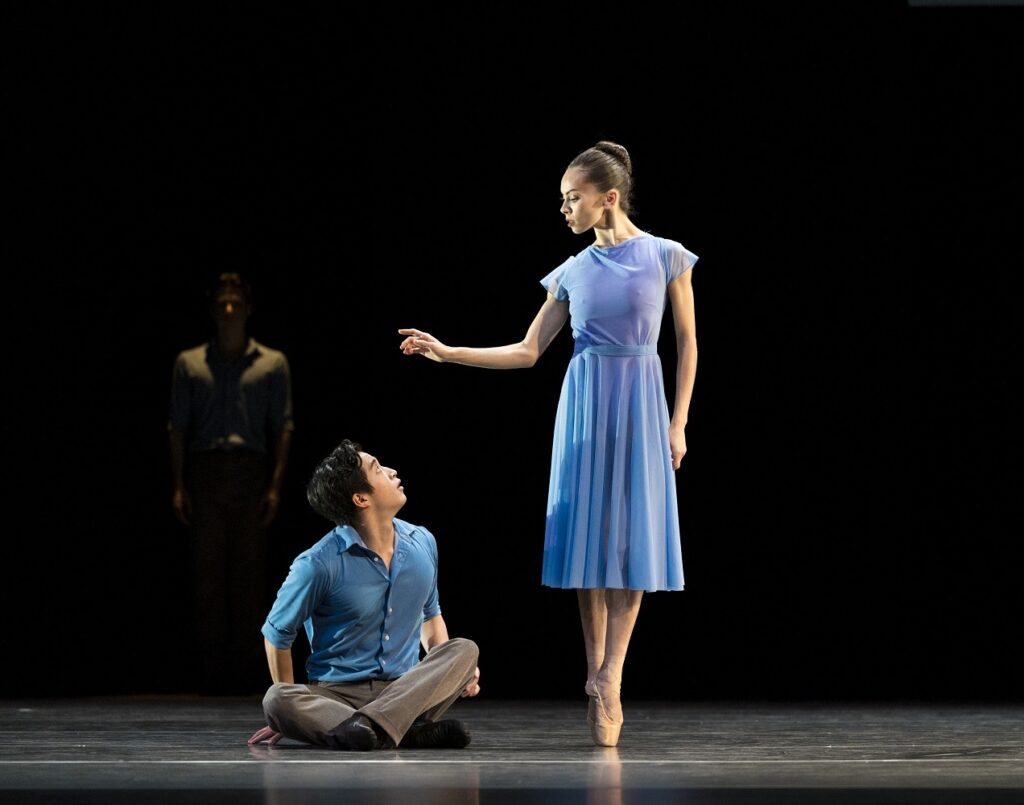
Pacific Northwest Ballet soloists Kuu Sakuragi and Clara Ruf Maldonado in Donald Byrd’s “Love and Loss” – Photo © Angela Sterling.
The wonderful company dancers not mentioned above were; Madison Abeo, Jonathan Batista, Clara Ruf Maldonado, Kuu Sakuragi, Larry Lancaster, Sarah Gabrielle Ryan, Ezra Thomson, Cecilia Iliesiu, Dylan Wald, Kuu Sakuragi, Sarah Gabrielle Ryan, Ezra Thomson, Dylan Calahan, Mark Cuddihee, Christian Poppe, Price Suddarth, Ashton Edwards, Dammiel Cruz-Garrido, Ryan Cardea, and Amanda Morgan.
Again, PNB is to be given credit for bringing new and intriguing work to the stage and for always giving each piece its full support. As always, I look forward with great anticipation to whatever they do next.
To learn more about Pacific Northwest Ballet, please visit their website.
This review was edited on 11/24/23
Written by Tam Warner for LA Dance Chronicle.
Featured image: Pacific Northwest Ballet company dancers in Alexei Ratmansky’s “Wartime Elegy” – Photo © Angela Sterling.

